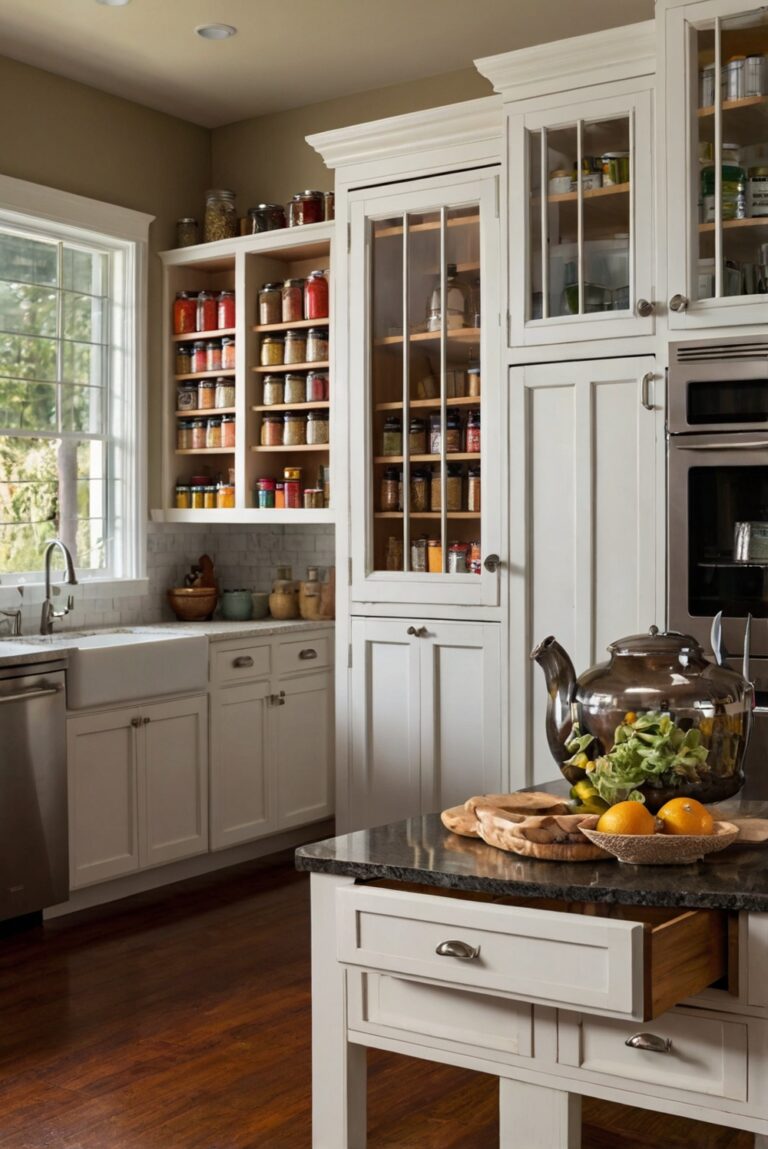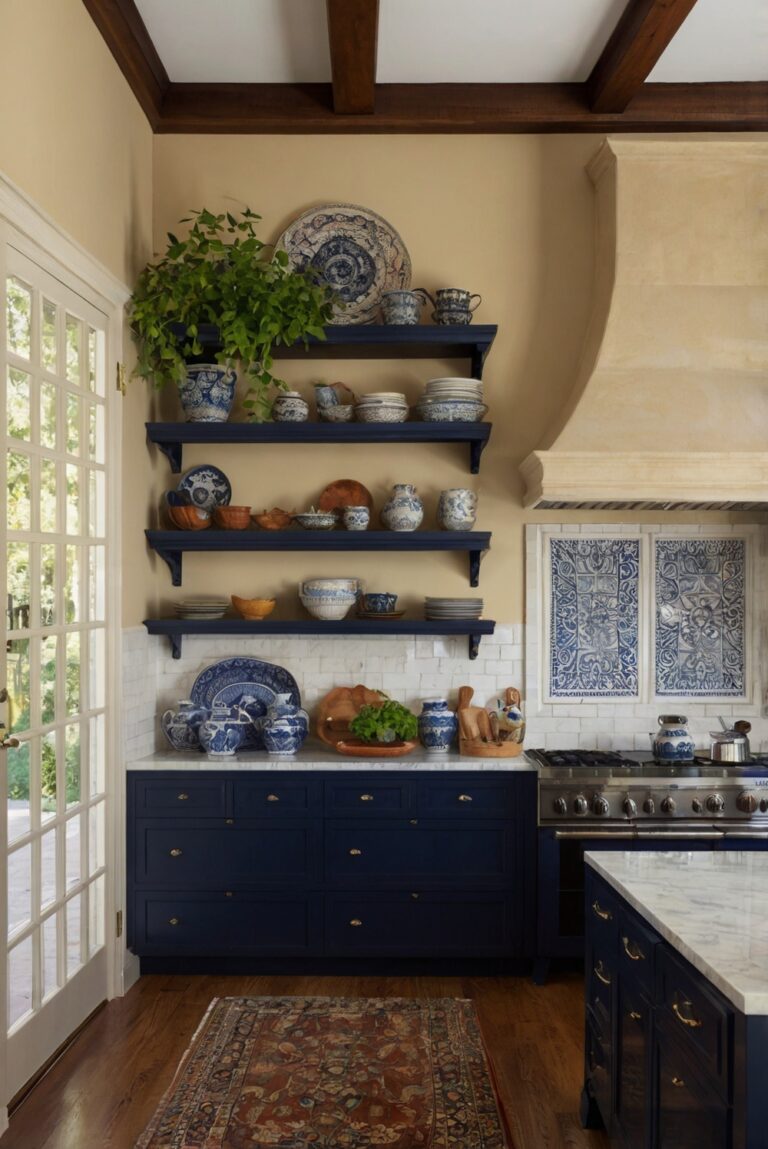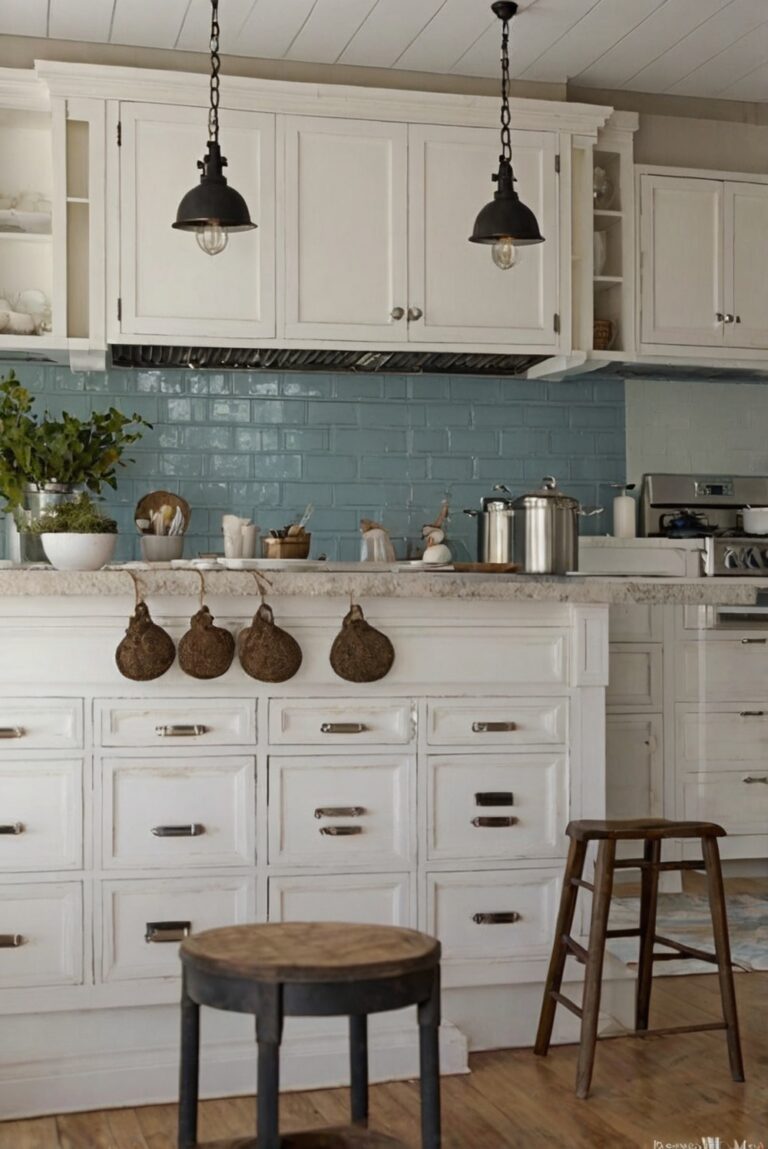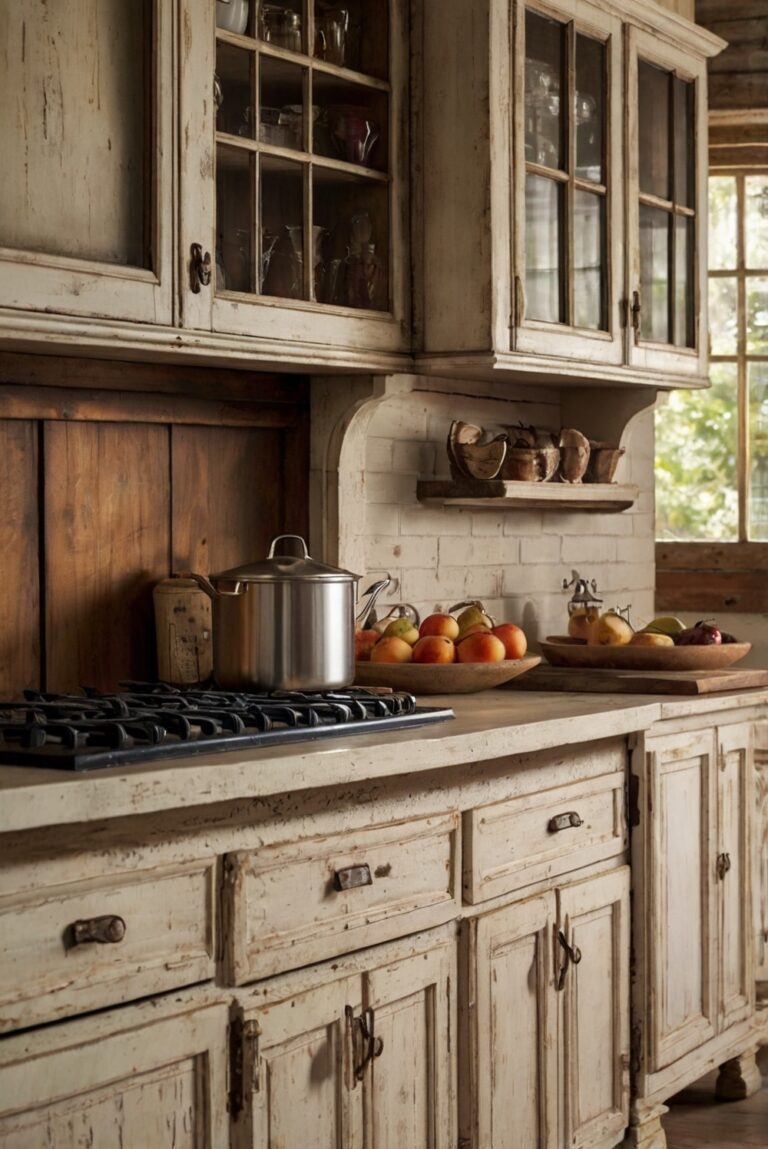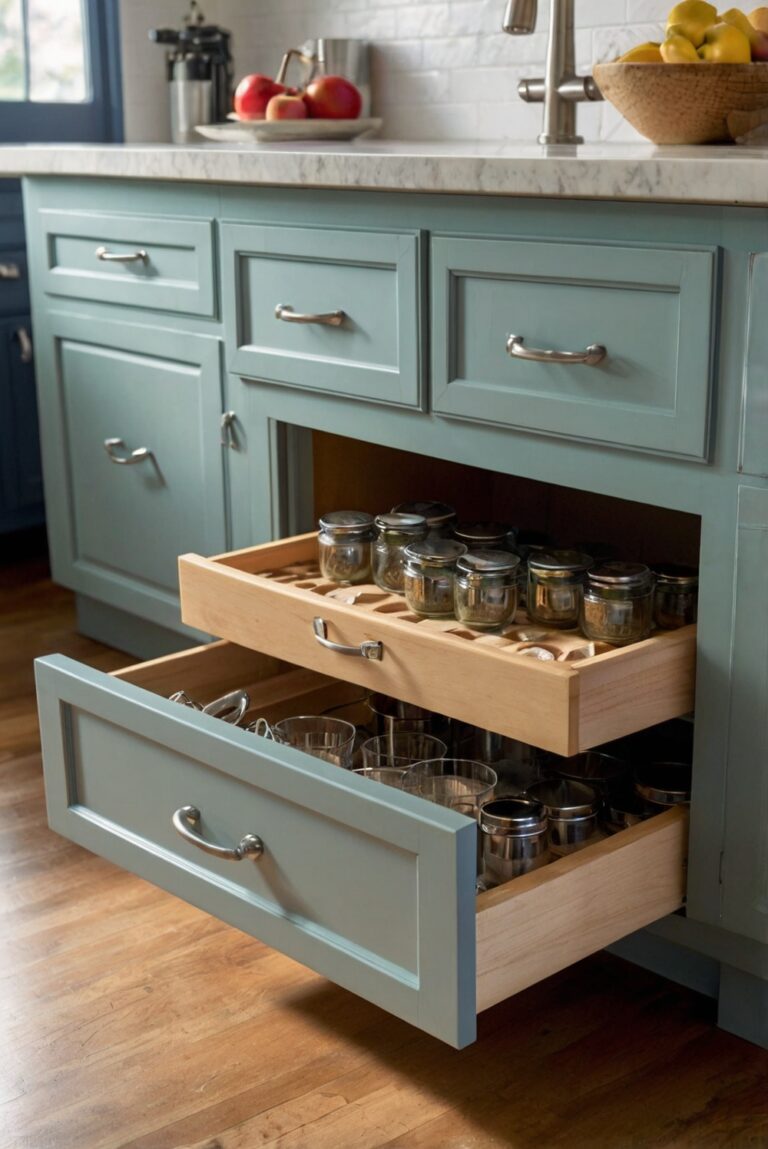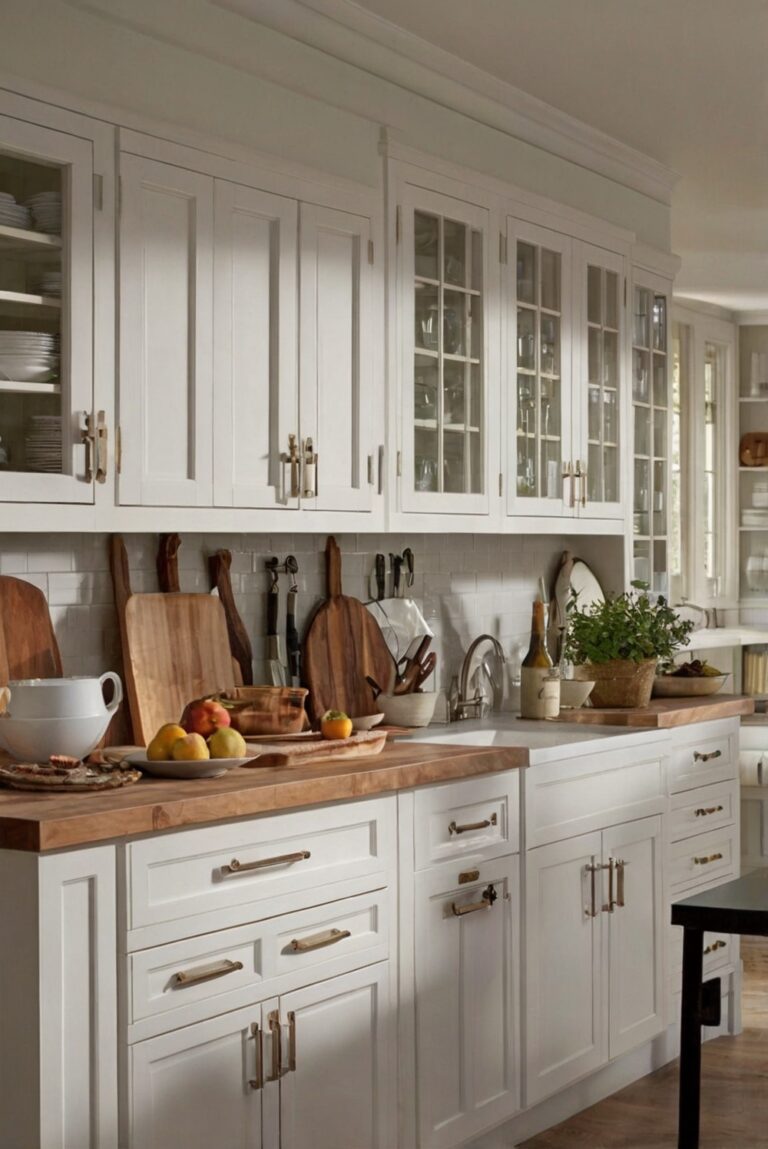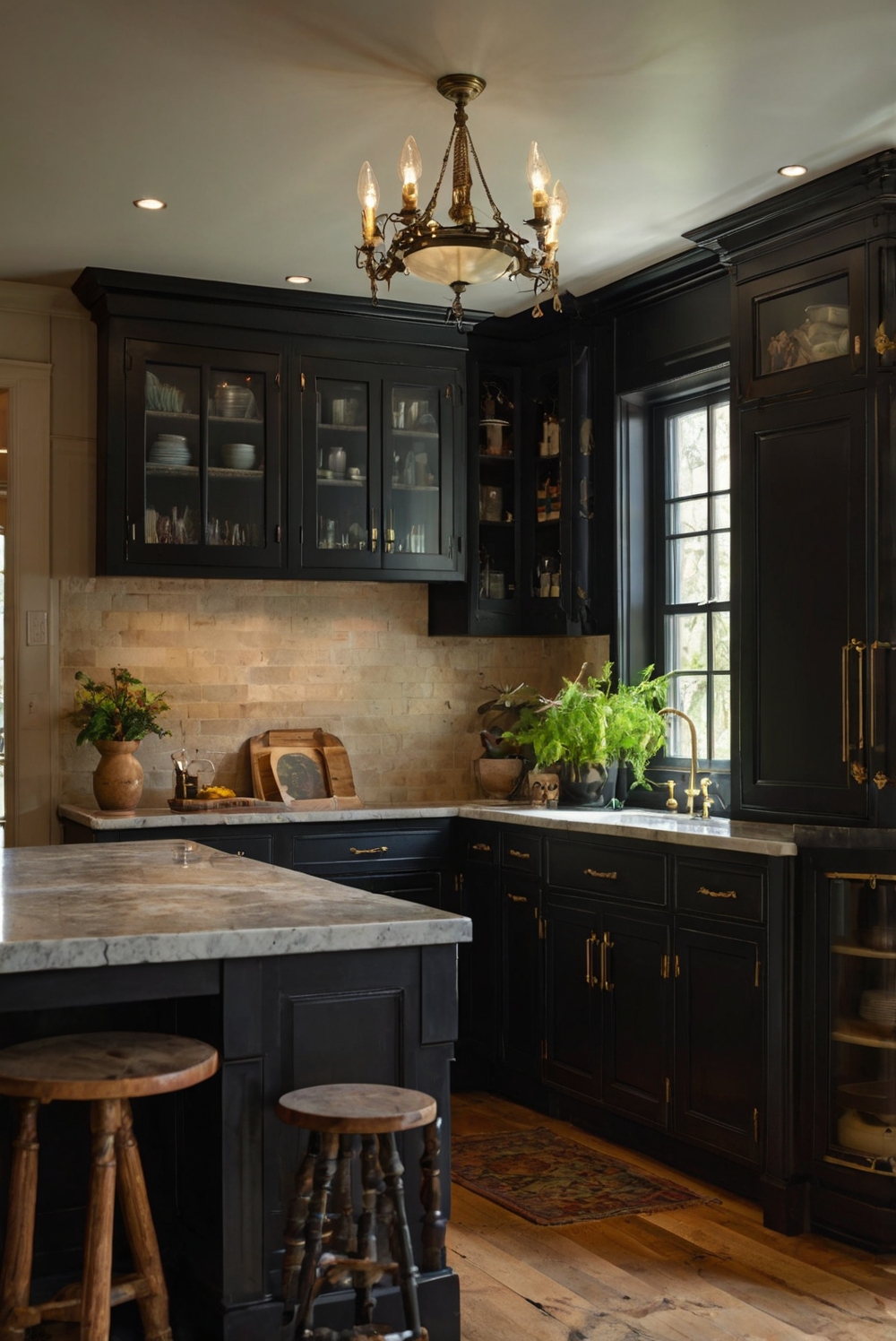
Discover sustainable kitchen cabinet options with eco-friendly materials to enhance your interior design routine. Explore the best choices for stylish and environmentally conscious choices.
Some eco-friendly materials for sustainable kitchen cabinetry include bamboo, reclaimed wood, FSC-certified wood, and recycled materials such as glass or metal.
These materials are not only stylish and durable but also contribute to reducing environmental impact.
When choosing eco-friendly materials for your kitchen cabinetry, consider the source of the material, the manufacturing process, and the potential for recycling or upcycling.
Additionally, opt for low VOC or VOC-free finishes to further minimize the environmental footprint of your project.
By incorporating sustainable materials into your home decor interior design, you can create a beautiful and environmentally responsible space for your family to enjoy.
What Are Some Eco-Friendly Materials for Sustainable Kitchen Cabinetry?
Bamboo:
Bamboo is a highly sustainable material that is rapidly renewable, making it an excellent choice for eco-friendly kitchen cabinetry. It grows quickly and matures in just a few years, compared to hardwood trees that take decades to grow. Bamboo is also durable, strong, and resistant to moisture, making it ideal for kitchen cabinets. Additionally, bamboo has a beautiful natural look that can enhance the aesthetics of your kitchen.
Reclaimed Wood:
Using reclaimed wood for kitchen cabinetry is another eco-friendly option. Reclaimed wood is sourced from old buildings, barns, or other structures, giving it a unique character and history. By repurposing old wood, you are reducing the demand for new timber and helping to minimize deforestation. Reclaimed wood can add a rustic charm to your kitchen while promoting sustainability.
Recycled Wood Fiberboard:
Wood fiberboard made from recycled wood fibers is a sustainable alternative to traditional plywood or MDF (Medium-Density Fiberboard). This material is manufactured using wood scraps, sawdust, and other wood waste, reducing the need for virgin wood. Recycled wood fiberboard is durable, affordable, and environmentally friendly, making it a great choice for eco-conscious homeowners.
Cork:
Cork is a natural and renewable material that is often used for flooring and wall coverings, but it can also be a unique option for kitchen cabinetry. Cork is harvested from the bark of cork oak trees, which can be done without harming the tree. It is lightweight, water-resistant, and has natural antimicrobial properties, making it a suitable material for kitchen cabinets. Cork also has a distinctive texture and appearance that can add visual interest to your kitchen.
Recycled Glass:
Recycled glass can be transformed into stunning kitchen cabinet doors or countertops, offering a sleek and modern design aesthetic. Using recycled glass helps to divert glass waste from landfills and reduces the energy required to produce new glass materials. Recycled glass cabinets can be customized with various colors and textures, providing a unique and eco-friendly option for sustainable kitchen design.
In conclusion, there are several eco-friendly materials available for sustainable kitchen cabinetry, each offering unique benefits in terms of sustainability, durability, and aesthetics. By choosing materials such as bamboo, reclaimed wood, recycled wood fiberboard, cork, or recycled glass, you can create a stylish and environmentally conscious kitchen that reflects your commitment to sustainable living. Consider the qualities and characteristics of each material to determine the best option for your kitchen renovation project. Embracing eco-friendly materials not only reduces your environmental impact but also contributes to a healthier and more sustainable home environment.
1. What are some popular eco-friendly materials for sustainable kitchen cabinetry?
Some popular eco-friendly materials for sustainable kitchen cabinetry include bamboo, reclaimed wood, and FSC-certified wood. Bamboo is a fast-growing and renewable resource that is durable and stylish. Reclaimed wood is salvaged from old buildings or furniture, giving it a unique character and reducing the need for new wood harvesting. FSC-certified wood comes from responsibly managed forests, ensuring the wood is sourced sustainably. These materials not only help reduce the environmental impact of kitchen cabinetry but also add a touch of natural beauty to the space.
2. How do eco-friendly materials benefit sustainable kitchen cabinetry?
Eco-friendly materials benefit sustainable kitchen cabinetry by reducing the environmental impact of the manufacturing process. Using materials like bamboo, reclaimed wood, and FSC-certified wood helps conserve natural resources, reduce carbon emissions, and promote sustainable forestry practices. These materials are often durable and long-lasting, making them a smart choice for homeowners looking to invest in high-quality and environmentally friendly kitchen cabinetry. By choosing eco-friendly materials, homeowners can create a healthier and more sustainable living environment while supporting responsible production practices.
3. Are there any cost-effective eco-friendly materials for sustainable kitchen cabinetry?
Yes, there are cost-effective eco-friendly materials for sustainable kitchen cabinetry. For example, bamboo is an affordable option that is both eco-friendly and stylish. Bamboo grows quickly and is readily available, making it a cost-effective choice for kitchen cabinetry. Reclaimed wood is another budget-friendly option, as it can often be sourced at a lower cost than new wood. By choosing these cost-effective eco-friendly materials, homeowners can create sustainable kitchen cabinetry without breaking the bank.
4. How can homeowners ensure the sustainability of their kitchen cabinetry materials?
Homeowners can ensure the sustainability of their kitchen cabinetry materials by choosing materials that are certified by reputable organizations such as the Forest Stewardship Council (FSC). FSC-certified wood ensures that the wood comes from responsibly managed forests, where trees are harvested in a sustainable and environmentally friendly manner. Additionally, homeowners can look for products made from recycled or reclaimed materials, which help reduce waste and promote circular economy principles. By doing research and selecting materials with proven sustainability credentials, homeowners can make informed choices when it comes to their kitchen cabinetry.
5. What are some tips for designing a sustainable kitchen using eco-friendly materials?
When designing a sustainable kitchen using eco-friendly materials, consider the following tips:
– Choose energy-efficient appliances to reduce electricity consumption.
– Use natural lighting to minimize the need for artificial lighting.
– Opt for low-VOC or VOC-free finishes to improve indoor air quality.
– Incorporate recycled or reclaimed materials into the design for a unique and eco-friendly touch.
– Select durable materials that are easy to maintain and will stand the test of time.
By following these tips and choosing eco-friendly materials for kitchen cabinetry, homeowners can create a sustainable and environmentally friendly kitchen that is both stylish and functional.

